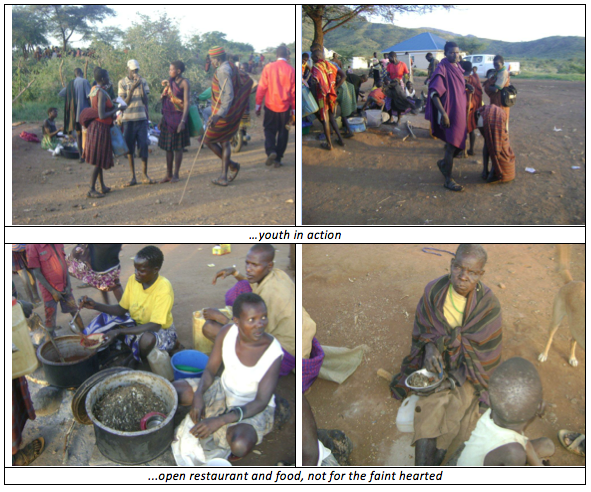Hurtling down the rugged Soroti –Moroto road, I was simply excited at the prospect of a few days in a part of Uganda not many people get to see. I did not hear a thing, advice or whatever, that my supervisor said as I left my Kampala placement site for a journey I had clearly and in eagerness marked on my calendar, as all I could think about was the many stories that I’d grown to associate with Karamoja, some good, most of them bad…the people, culture, stereotypes and so on and so forth.
Seeing is believing as over days, I learnt that Karamoja region, home to the Karamajong, is unique, Uganda’s only natural wilderness, if I may say…arid and yet beautiful, home to a nomadic and free living community of bead-draped and cloth-robed youth, men and women. No doubt with one of the richest cultures in Uganda, it’s simply hard to pass by the Karamojong, individual or group, without taking a second look.
Once a no-go area, the rumored presence of gold and mineral deposits has only made the region more popular, with an ever increasing presence of traffic on their narrow bumpy roads… relief aid, NGO and government owned vehicles. Above all, it’s really the Karamajong that are the gold in the region. As a pastoral people they share the same vast lands with the wildlife in parks like Kidepo national park, for their cattle to graze. A story is told of how former president Idi Amin once placed a ban on their nakedness in public, but joined their almost nude frolicking in the villages once he had a taste of the blistering heat they experience daily, to make the most of the occasional beautiful breeze. Once with a cache of illegal guns used for cattle rustling, a government driven “arms-for-cattle exchange” program seems to have brought a serenity not many envisioned here. Droughts and heavy seasonal rains that make the region inaccessible in equal measure, famines that have continued for ages… even with the heavy presence if international aid agencies, and the establishment of a docket for “Karamoja Affairs” in government.
The stats here are ever interesting, lowest pit latrine coverage, lowest health facility coverage, lowest HIV prevalence in the country, highest rates of marital rape…. No population in Uganda provides a better lesson on the role of socio-economic factors as major predictors/contributors to the health outcomes and dynamics of a population than the Karamajong in Uganda, as Karamoja.
